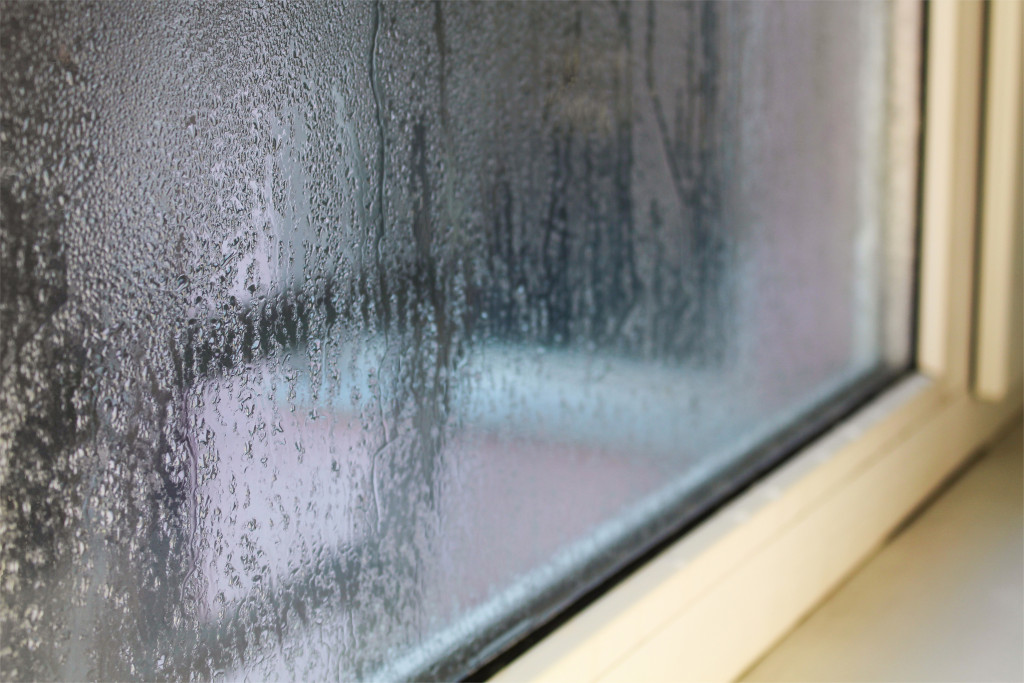Humidity and moisture are perfectly normal to have in your home. They keep your skin healthy and moist and minimize static electricity buildup on your surfaces. However, too much moisture can lead to a variety of issues in your home.
Some of them can cause health problems. Other problems can jeopardize the structure and look of your house. These include:
-
Mold
You can’t escape mold spores. They’re everywhere and can enter your home through your doorways, windows, and even vents. They can even cling to your clothes and shoes. Your pets can also carry them indoors. These spores aren’t much of an issue. The problems start when they drop in corners and surfaces with excessive moisture and little to no sunlight. They’ll grow rapidly in the form of black, green, or even yellow spots. There are types of mold that can trigger allergic reactions. They can also damage surfaces over time.
-
Condensation
This issue happens when water vapor gets exposed to a cold surface, like a wall or your ceiling. The moisture turns into water droplets that seep into the surface. When these droplets get into contact with wood, they can help mold grow or even rot material.
-
Warping
Groundwater can often be found in cracks and spaces in sand, rock, and soil. These are part of the natural water cycle and are formed when rainwater makes its way into the ground. It infiltrates the surface and continues down into the soil. Sometimes, groundwater can make it into the foundation of your home. They can seep into materials like brick, stone, and concrete. They’ll eventually make it under your floors. And depending on your floor material, the groundwater could cause a variety of issues. The most common one is warping on wooden floors.
-
Electronics issues
Excessive moisture and high humidity can also create electrical issues. When condensation forms inside electronic appliances and devices, like your laptop’s OLED display, the water can corrode the components. When moisture gets onto electrical contacts, it can also cause a short circuit. A short circuit happens when excessive electrical current passes through a circuit, causing it to fail or even blow up. ; This could endanger not only the electronic device but also the safety of the person using them.

How to Deal With Moisture Issues
Moisture problems in your home can lead to costly health issues and property damage.
Here are effective ways to deal with them.
-
Use engineered wood floors
Engineered hardwood floors in natural oak provide many benefits. The most significant advantage is that it’s more resistant to moisture than traditional hardwood floors. This is because it’s made with several layers (some models go up to eight layers). The top is made of high-quality wood, while the core is made of layers of fiberboard or plywood. The bottom layer is often made of sealed, moisture-resistant hardwood. Water will have a hard time getting through the top and bottom layers of the material. ;
-
Identify and fix leaks
Some leaks in your home go unnoticed because most of your pipes are hidden in walls and cabinets. The water can seep into the floor and wall, creating colonies of mold. The water can also just evaporate and create more moisture in the air. Hire a plumber for a complete inspection, maintenance, and repair of your home’s pipes.
-
Let the air flow
Poor ventilation traps moisture inside your home and creates humidity issues. You can easily solve this problem by opening your windows, especially when you’re cooking or showering. This lets air circulate and take away excess moisture. You can improve ventilation further by using electric fans and installing exhaust fans in your kitchen and bathroom.
-
When in doubt, use a dehumidifier
You can also use a dehumidifier to get rid of excess moisture in your home. There are plants, like epiphytes, that get their water supply from the air, which can also act as natural dehumidifiers.
The dangers of low humidity
You shouldn’t go overboard when it comes to decreasing your home’s moisture levels. Low humidity can cause wood to lose its shape and crack. It can also make you more vulnerable to colds, as low humidity can prevent your nose’s hair-like structures to remove viral particles. It also reduces the ability of your lung cells to repair damage caused by viral illnesses like the common cold.
Moisture is a normal part of every space. It helps keep the air cool and minimizes skin and hair dryness. However, too much of it can cause serious problems for certain parts of your home, and even your family’s health. Use these suggestions to keep humidity levels optimal.

